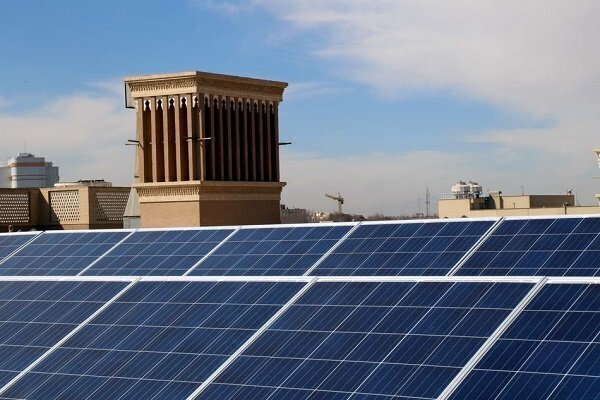Iran seeking to get International Solar Alliance membership

TEHRAN – The administration has recently sent a bill to the parliament, aiming to get the nod for joining the International Solar Alliance.
According to the Sixth Development Plan (2016-2021), the government should have increased the share of renewables in power generation to at least five percent.
However, the nominal installed capacity of the country's electricity production is currently 90 gigawatts, of which the share of renewable power plants and solar farms is just 970 megawatts, equaling slightly more than 1.1% of the electricity production capacity of the country.
The government is planning to become the main producer of electricity using clean sources of energy by expanding renewable power plants by 13 times.
According to the Ministry of Energy, solar power plants have an annual production of 455.28 megawatts and a share of 50.38 percent of renewable electricity, followed by wind power plants with a share of 34.31 percent.
ISA at a glance
The International Solar Alliance (ISA) is an action-oriented, member-driven, collaborative platform for increased deployment of solar energy technologies as a means for bringing energy access, ensuring energy security, and driving energy transition in its member countries.
At present, 110 countries are signatories to the ISA Framework Agreement, of which 90 countries have submitted the necessary instruments of ratification to become full members of the ISA.
The ISA strives to develop and deploy cost-effective and transformational energy solutions powered by the sun to help member countries develop low-carbon growth trajectories, with a particular focus on delivering impact in countries categorized as Least Developed Countries (LDCs) and the Small Island Developing States (SIDS).
Being a global platform, ISA’s partnerships with multilateral development banks (MDBs), development financial institutions (DFIs), private and public sector organizations, civil society, and other international institutions are key to delivering the change it seeks to see in the world going ahead.
The ISA is guided by its ‘Towards 1000’ strategy which aims to mobilize USD 1,000 billion of investments in solar energy solutions by 2030 while delivering energy access to 1,000 million people using clean energy solutions and resulting in the installation of 1,000 GW of solar energy capacity.
This would help mitigate global solar emissions to the tune of 1,000 million tonnes of CO2 every year. For meeting these goals, the ISA takes a programmatic approach.
Currently, the ISA has 9 comprehensive programs, each focusing on a distinct application that could help scale the deployment of solar energy solutions.
Activities under the program focus on 4 priority areas – Analytics & Advocacy, Capacity Building, Programmatic Support, and readiness and enabling activities, that help create a favorable environment for solar energy investments to take root in the country.
The ISA was conceived as a joint effort by India and France to mobilize efforts against climate change through the deployment of solar energy solutions. It was conceptualized on the sidelines of the 21st Conference of Parties (COP21) to the United Nations Framework Convention on Climate Change (UNFCCC) held in Paris in 2015.
With the amendment of its Framework Agreement in 2020, all member states of the United Nations are now eligible to join the ISA.
MG
Leave a Comment